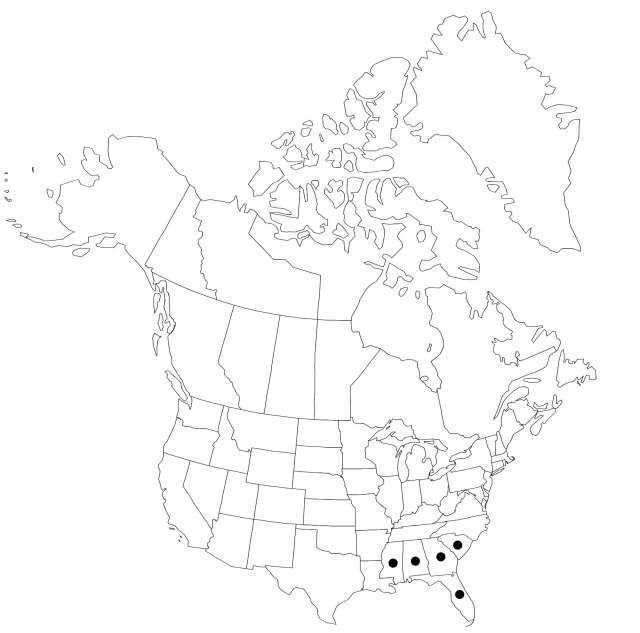Carex dasycarpa
Descr. Gram., 236. 1817.
Plants loosely cespitose; rhizomes slender. Culms 13–40 cm, smooth, sparsely pilose. Leaf-blades M-shaped in cross-section when young, 2–4.5 mm wide, at least proximal pilose. Inflorescences: proximal bracts sheathless or sheath not more than 2 mm; lateral spikes 6–27 × 4–9 mm, all in distal 1/2 of stem; terminal spike 8–20 × 1–2.5 mm. Pistillate scales 3-veined, ovate, 2.3–3 × 1.3–2.2 mm, shorter than perigynia, apex acute, sometimes with awn to 0.7 mm. Staminate scales 3-veined, 3.2–5 × 1.2–2 mm. Perigynia 20–30-veined, narrowly ovoid, 4.5–6 × 1.4–2 mm, spongy at base, subglabrous to puberulent proximally, pilose distally, at least some hairs 0.3–0.4 mm; beak obscure, 0.3–0.5 mm. Achenes: stipe to 1 mm; bodies 2.5 × 1.3–1.7 mm, filling only distal part of perigynia.
Phenology: Fruiting early spring–summer.
Habitat: Hardwood forests on sand
Elevation: 0–100 m
Distribution

Ala., Fla., Ga., Miss., S.C.
Discussion
Carex dasycarpa is rare throughout most of its range.
Selected References
None.
Lower Taxa
"shortened" is not a number.
